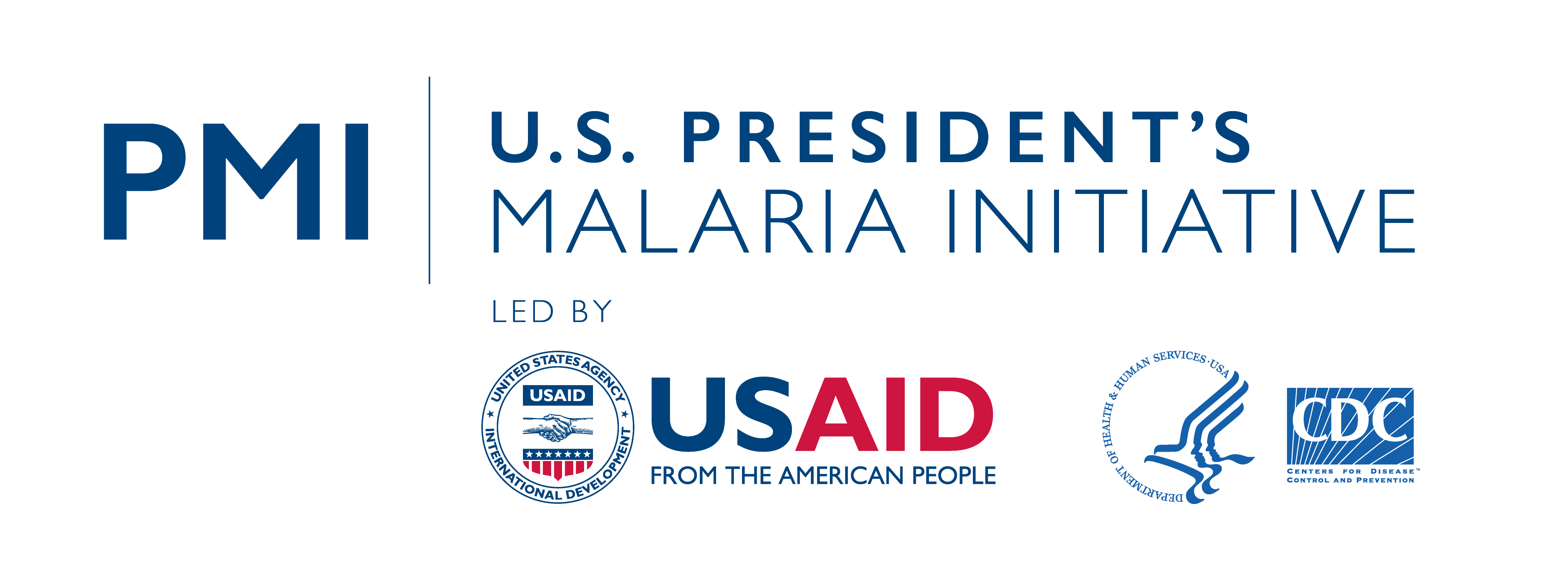In 2020, nearly three million malaria cases and 4,121 deaths were recorded in health facilities in Cameroon. Children under five years of age are disproportionately at risk, accounting for around 32% of malaria cases and 64% of deaths. Entomological monitoring enables us to determine which mosquitoes transmit malaria, where they’re located, and what their feeding and resting habits are like.
PMI has supported entomological monitoring in Cameroon since October 2018, conducting vector bionomics data collections either monthly or every other month in five sites: Gounougou (located in the North region in Lagdo district), Simatou (in the Far North in Maga district), Bonabéri (located in the Littoral region in Bonassama district), Mangoum (in the West region in Foumbot district), and Nyabessang (South region, Ambam district). Insecticide resistance monitoring was conducted in four sentinel sites (Gounougou, Simatou, Nyabessang, and Mangoum) in late 2018 and in all five sites in 2019 and 2020.
In 2020, vector surveillance data collected using three collection methods—human landing catches (HLCs), U.S. Centers for Disease Control and Prevention (CDC) light traps (LTs), and pyrethrum spray catches (PSCs)—showed a diversity of Anopheles species across sites. Anopheles gambiae s.l., An. pharoensis, and An. funestus s.l. were the most abundant and were found in all sites and through all collection methods, except Bonabéri where only An. gambiae s.l. was collected using HLCs. An. moucheti and An. nili were collected only at Nyabessang through HLCs and CDC LTs.
In Years three (May 2020 – April 2021) and four (May 2021 – April 2022), VectorLink Cameroon supported the NMCP in its goal to increase the entomological capacity at the regional and district level, facilitating trainings for health personnel on basic entomology, including collection and identification of larvae and mosquitoes. Over the two years, 81 health personnel were trained (49 from the Far North, North, Littoral, South, and West regions in Year 3, and 32 from the Adamawa and East regions in Year 4). A subset of those trained have since been involved as technicians in vector surveillance and insecticide resistance monitoring activities conducted by VectorLink at their specific sites included in the workplan. The remaining personnel trained are available for the NMCP to engage for entomological activities as the need arises.
In Year five (May 2022 – April 2023), the PMI VectorLink Cameroon project will continue its partnership with NMCP and local research institutes [Biotechnology Center (BTC), Center for Research in Infectious Diseases (CRID), and the Central African Organization for Endemic Diseases Control (OCEAC)] to conduct entomological monitoring and insecticide susceptibility testing. The project will subcontract with CRID to conduct all laboratory analyses of entomological samples collected during the work plan period and to conduct bioassay testing of ITNs as part of the durability monitoring activity (while CDC supports chemical testing). The project’s primary objective is to collect field and laboratory entomological data to support NMCP with data for vector control decision making for implementing life-saving malaria vector control interventions with the overall goal of reducing the burden of malaria.
Specific objectives are as follows:
Entomological Monitoring
- Continue to monitor the species composition, density, resting and biting behavior, and Plasmodium sporozoite infection rates of malaria vectors, as well as human behavior indoors and outdoors, in five longitudinal vector surveillance sites selected by the NMCP in various ecozones.
- Determine the susceptibility of the primary malaria vector gambiae s.l. to insecticides used for impregnation of ITNs and IRS, including chlorfenapyr and clothianidin, in the same 10 sentinel sites which were monitored in Year 4. Also, conduct susceptibility testing on adult An. pharoensis and An. ziemanni collected in Simatou and Gounougou and An. moucheti collected in Nyabessang.
- Measure the intensity of insecticide resistance, determine the resistance mechanism, and assess the synergist effect of piperonyl butoxide (PBO) on the susceptibility of gambiae s.l. in the 10 sites.
- Conduct larval surveys at three time points (June, October, and November) at four sites in Douala Port to assess presence of stephensi.
- Commence preparatory activities and conduct pre-distribution bioassays and chemical content analysis as part of streamlined durability monitoring of ITNs distributed in the North and/or Far North during the 2022 mass campaign.
- Assess the impact of human behavior and the ITN use (measuring using accelerometers) on vector bionomics (such as biting rate) in two sentinel sites in northern Cameroon (Simatou and Gounougou).
Entomological Scale Up of Capacity
- Enhance the generation and use of entomological data for decision making through support to the NMCP’s national Vector Control Committee (VCC). Organize and present VectorLink data at quarterly meetings, build the capacity of key stakeholders to use and interpret entomological data, and work with the VCC to identify other potential research institutes in the country with insectary and/or molecular capabilities which could be targeted by capacity strengthening efforts and help decentralize entomological laboratory capabilities in the country.
- Train and support regional and district entomology technicians on malaria entomological techniques through international trainings in collaboration with international partners such as Institut de Recherche en Sciences de la Santé (IRSS) in Bobodioulasso, Burkina Faso.

